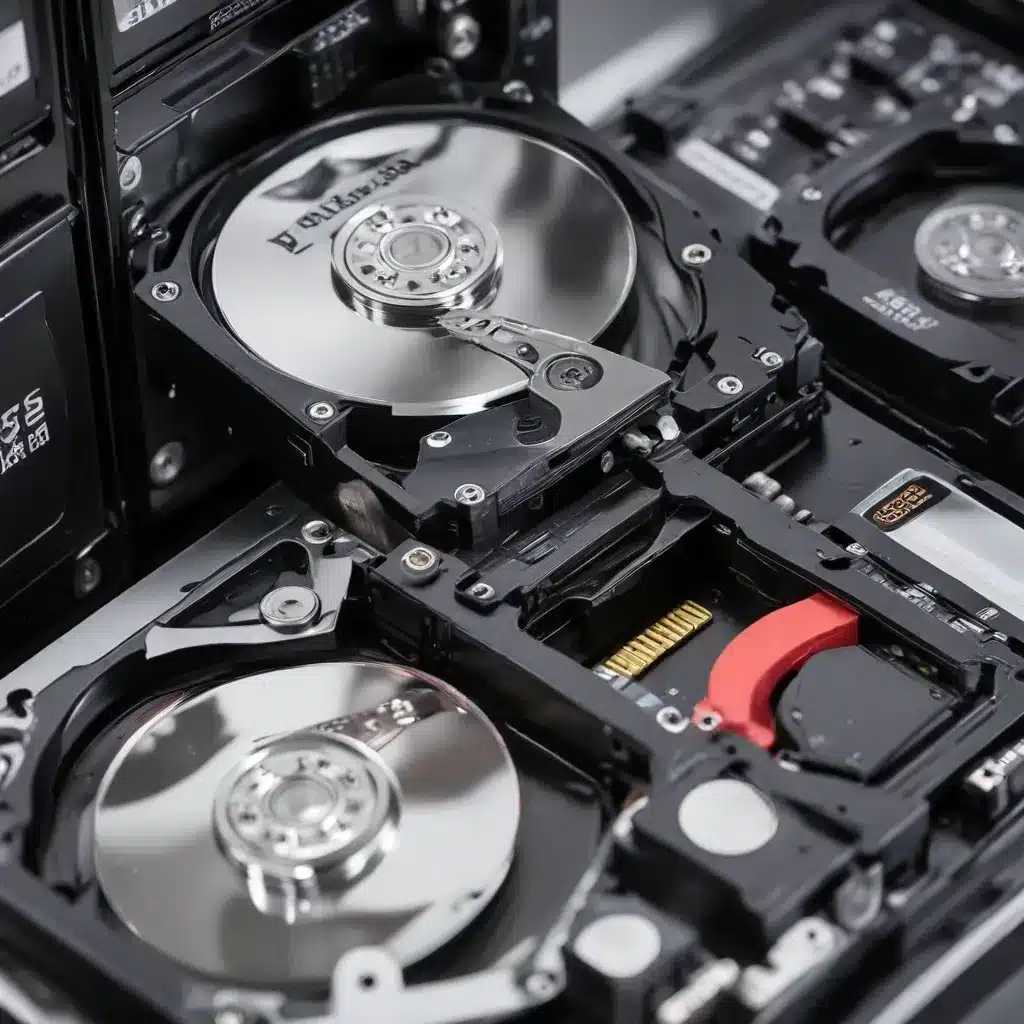
Storage Devices
Data storage devices like hard drives, solid-state drives (SSDs), USB flash drives, and memory cards play a crucial role in our digital lives. Whether it’s personal photos, important documents, or essential business files, we rely on these devices to keep our data safe and accessible. However, storage devices can sometimes fail, leading to the loss or corruption of valuable information.
File Systems
The way data is organized and accessed on a storage device is determined by its file system. The most common file systems are:
NTFS (New Technology File System): The standard file system for Windows operating systems, NTFS offers advanced features like encryption, access control, and larger file/volume sizes.
FAT (File Allocation Table): An older file system, FAT is still used on some removable media like USB drives and SD cards. It has simpler file management but limited file size and volume capacity.
ext4 (Fourth Extended File System): The default file system for most Linux distributions, ext4 provides robust data integrity, large file/volume support, and advanced metadata handling.
Storage Failure Modes
Storage devices can fail for various reasons, leading to data loss or corruption. Some common failure modes include:
Physical Damage: This can occur due to physical trauma (e.g., drops, impacts), environmental factors (e.g., water, heat), or general wear and tear over time. Physical damage can affect the internal components of a storage device, making data recovery challenging.
Logical Corruption: Logical failures happen when the file system or partition table becomes corrupted, often due to software issues, power failures, or improper shutdowns. This can result in a “RAW” or “unknown” file system that Windows or other OSes cannot recognize.
Firmware Issues: Some storage device failures are caused by problems with the device’s firmware, the low-level software that controls its operation. Firmware issues can lead to strange behaviors, data corruption, or even complete device failure.
Data Recovery Techniques
When faced with a failed or corrupted storage device, there are several techniques you can try to recover your data. The approach you take will depend on the nature of the failure and the value of the data.
Data Extraction
In cases where the device is still recognized by the operating system, you may be able to extract the data directly from the live system.
Live System Recovery: If the device is detected but the file system is corrupted, you can try using utilities like TestDisk or PhotoRec to scan the device and recover as much data as possible. These tools can often reconstruct file systems and extract individual files, even if the directory structure is lost.
Disk Cloning: For more serious failures, it’s best to create a complete clone or image of the drive before attempting any recovery. This can be done using tools like ddrescue or HDDSuperClone. Cloning the drive allows you to work on a copy, preserving the original in case further damage occurs during the recovery process.
Data Repair
If the device is not recognized or the file system is severely damaged, you may need to resort to more advanced data repair techniques.
File System Utilities: Tools like DMDE or Recuva can sometimes repair minor file system issues, allowing you to regain access to your data. These utilities can help reconstruct partition tables, fix boot sectors, and in some cases, recover deleted files.
Sector-level Editing: In extreme cases, you may need to work at the sector level, using low-level disk editors to manually analyze and reconstruct the file system structure. This is a complex and time-consuming process, often best left to professional data recovery services.
Failure Prevention and Mitigation
While data recovery can be a valuable skill, the best approach is to proactively prevent data loss in the first place. Here are some strategies to help you avoid storage device failures:
Backup Strategies
Redundant Storage: Maintain multiple copies of your important data, either through local backups (e.g., external hard drives) or cloud-based storage solutions. This ensures that you have a fallback option if one of your devices fails.
Version Control: For critical files, consider using version control software or cloud-based services that allow you to restore previous versions of your work. This can help you recover from accidental deletions or modifications.
Maintenance and Monitoring
Disk Health Monitoring: Regularly check the health of your storage devices using tools like CrystalDiskInfo or SMART utilities. These can help you identify potential issues before they lead to data loss.
Proactive Firmware Updates: Keep your storage devices up-to-date with the latest firmware releases, which often address known bugs and vulnerabilities that could lead to failures.
Tools and Utilities
When it comes to data recovery, having the right tools and utilities can make a significant difference. Here are some of the key tools you may want to consider:
Forensic Imaging
Hardware Imaging Devices: Specialized hardware devices, like Tableau Forensic Imager or eSATA docks, can create bit-for-bit copies of storage devices, preserving the original data.
Software-based Cloning: Tools like ddrescue, HDDSuperClone, and Clonezilla allow you to create disk images or clones of your storage devices, which can then be used for data recovery.
Data Recovery Software
Partition Recovery: Utilities like TestDisk and DMDE can help you recover lost or deleted partitions, as well as repair damaged partition tables.
File System Reconstruction: Applications such as PhotoRec, R-Studio, and UFS Explorer can scan storage devices and attempt to reconstruct the file system, allowing you to recover individual files.
Whether you’re dealing with a failed hard drive, a corrupted memory card, or a mysterious data loss scenario, the techniques and tools outlined in this article can help you get your valuable data back. Remember, prevention is key, so be sure to implement robust backup strategies and proactively monitor the health of your storage devices. With the right approach, you can minimize the impact of storage device failures and keep your data safe and secure.












